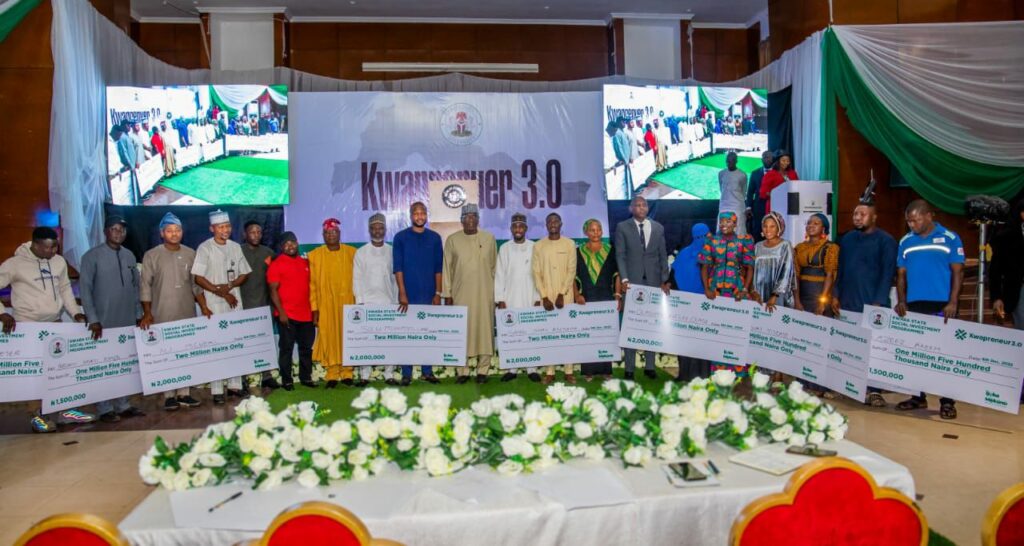How Kwapreneur Could Be the Key to Business Growth in Kwara, If Used Right
In recent years, Kwara State has taken bold steps to support economic development, especially among its youth and small business owners. Central to this effort is the Kwara State Social Investment Programme (KWASSIP), an initiative launched in 2019 with the aim of reducing poverty, empowering the vulnerable, and stimulating local enterprise. Among the many components of KWASSIP, the most prominent is Kwapreneur, a programme designed to provide financial and training support for young entrepreneurs aged 18–35. The first edition of Kwapreneur launched in 2021 and was backed by a partnership between KWASSIP and Fidelity Bank, providing interest-free loans ranging from ₦350,000 to ₦3 million, with a three-month moratorium period before repayment begins. The idea was simple and powerful: provide business-minded young people with the capital they need to either start or grow their businesses. Over 7,200 applicants applied during the first edition, out of which 170 entrepreneurs were selected based on business pitches, feasibility, and sustainability of their ideas. The top five applicants received ₦3 million each. Later editions followed, and by the time Kwapreneur 3.0 was rolled out, ₦229.5 million had been disbursed to support 490 small businesses across the state. This initiative was intended to do more than just provide funding, it was meant to transform Kwara into a hub for thriving, youth-led businesses. However, along the way, a critical challenge emerged. Despite the government’s clear intention to empower entrepreneurs and reduce poverty, a disturbing pattern began to appear: many of the beneficiaries were spending the loans on personal luxuries rather than business development. From anecdotal reports and community observations, it became evident that a number of recipients used their funds to buy expensive phones, clothes, or even organize celebrations. In some cases, funds were used to settle personal debts or handle non-business expenses. This misappropriation of funds goes directly against the purpose of the programme. These were loans, not grants, and they were expected to be repaid. But how can anyone repay a loan that was never invested to generate returns? When the money meant to grow a business is squandered, there’s no income to support repayment, and the entire cycle breaks down. This situation highlights a much deeper issue: a widespread lack of understanding about the difference between loans, grants, and personal income. A business loan is not free money. It is capital meant to be invested, with the expectation that it will produce growth, profit, and eventually, repayment. When beneficiaries fail to make this distinction, they not only put themselves at financial risk but also jeopardize the integrity and sustainability of the entire programme. If repayment rates fall, future funding becomes harder to justify, and the state may lose trust in its own empowerment strategies. Even worse, it can prevent serious, deserving entrepreneurs from accessing funds because of a lack of trust in the process. To solve this, Kwara State must take the next necessary step: mentorship. Every edition of the Kwapreneur programme going forward should be strategically tied to a structured business mentorship component. Shortlisted applicants should be trained and guided before and after disbursement. This should include practical education on: Beyond that, ongoing mentorship can help entrepreneurs identify untapped opportunities in their business ideas, improve marketing efforts, and avoid common pitfalls that plague startups. Such structured support is already being used in many successful business development programmes around the world. If Kwara adopts this model, it will not only improve loan repayment rates but also ensure that state resources are driving long-term business success, not short-term consumption. Ultimately, the impact of Kwapreneur cannot be measured by how many millions were disbursed. The true measure of success lies in how many businesses survive, how many jobs are created, and how many lives are transformed. That can only happen when entrepreneurs understand that business loans must be invested, not spent. Kwara State has done well to fund entrepreneurship. Now it must take one more step and build the mindset that drives responsible entrepreneurship. With proper mentorship and accountability, Kwapreneur can become more than a funding scheme—it can become the engine of a new business culture in the state. References: AuthorMahmood Abdullahi LokeFounder and CEO, D Creative Hub,Director, Accel360 Hub

